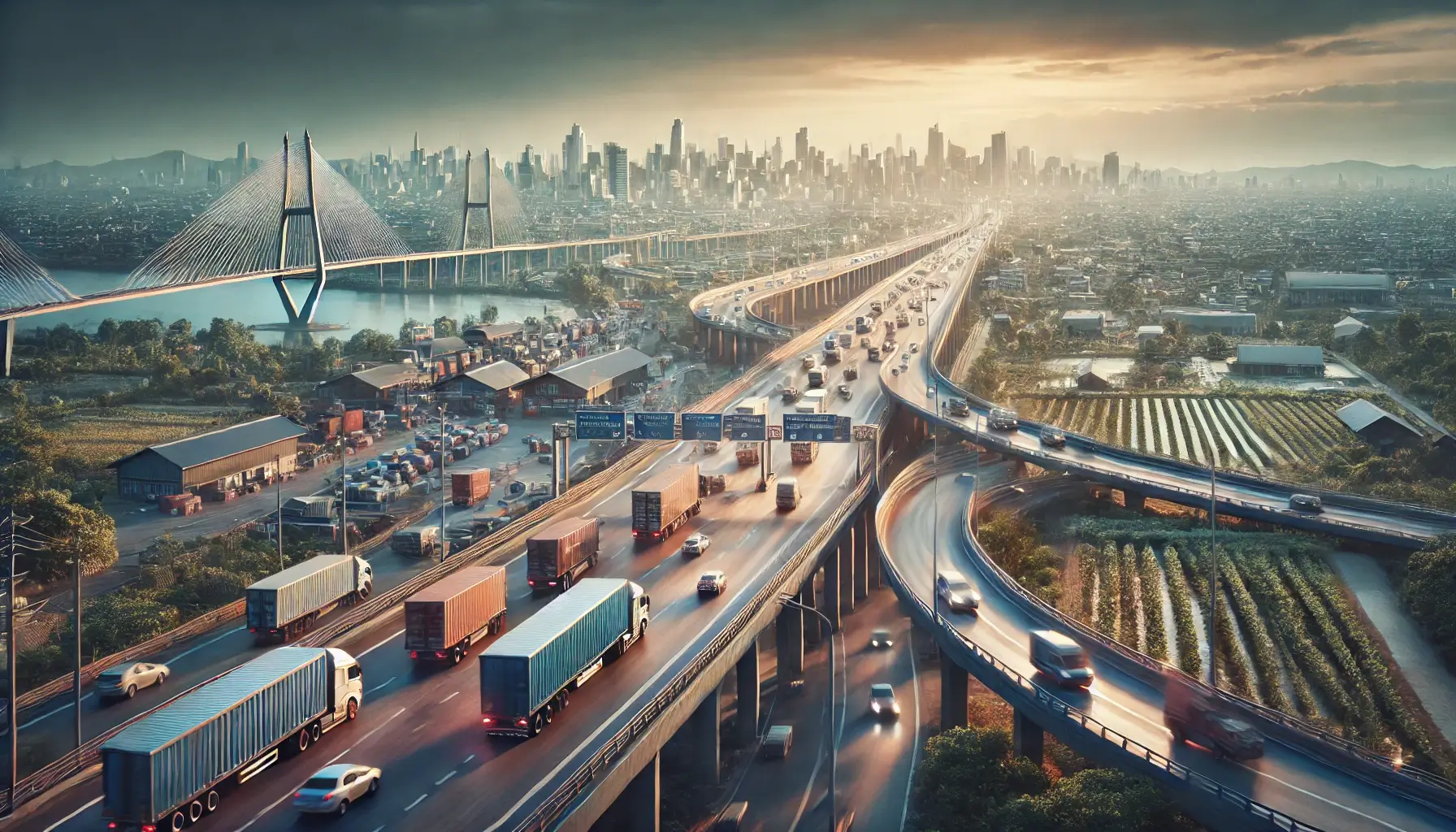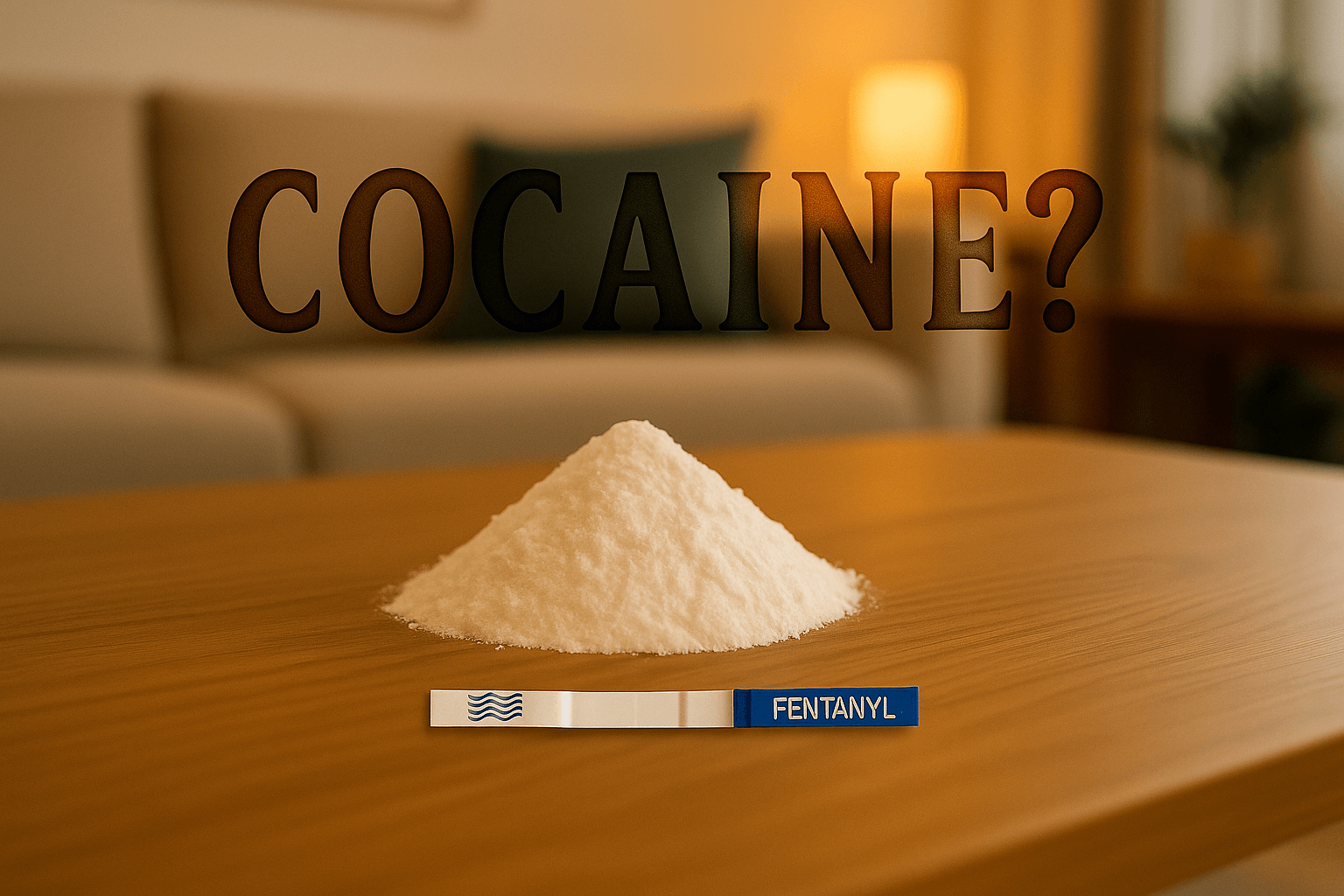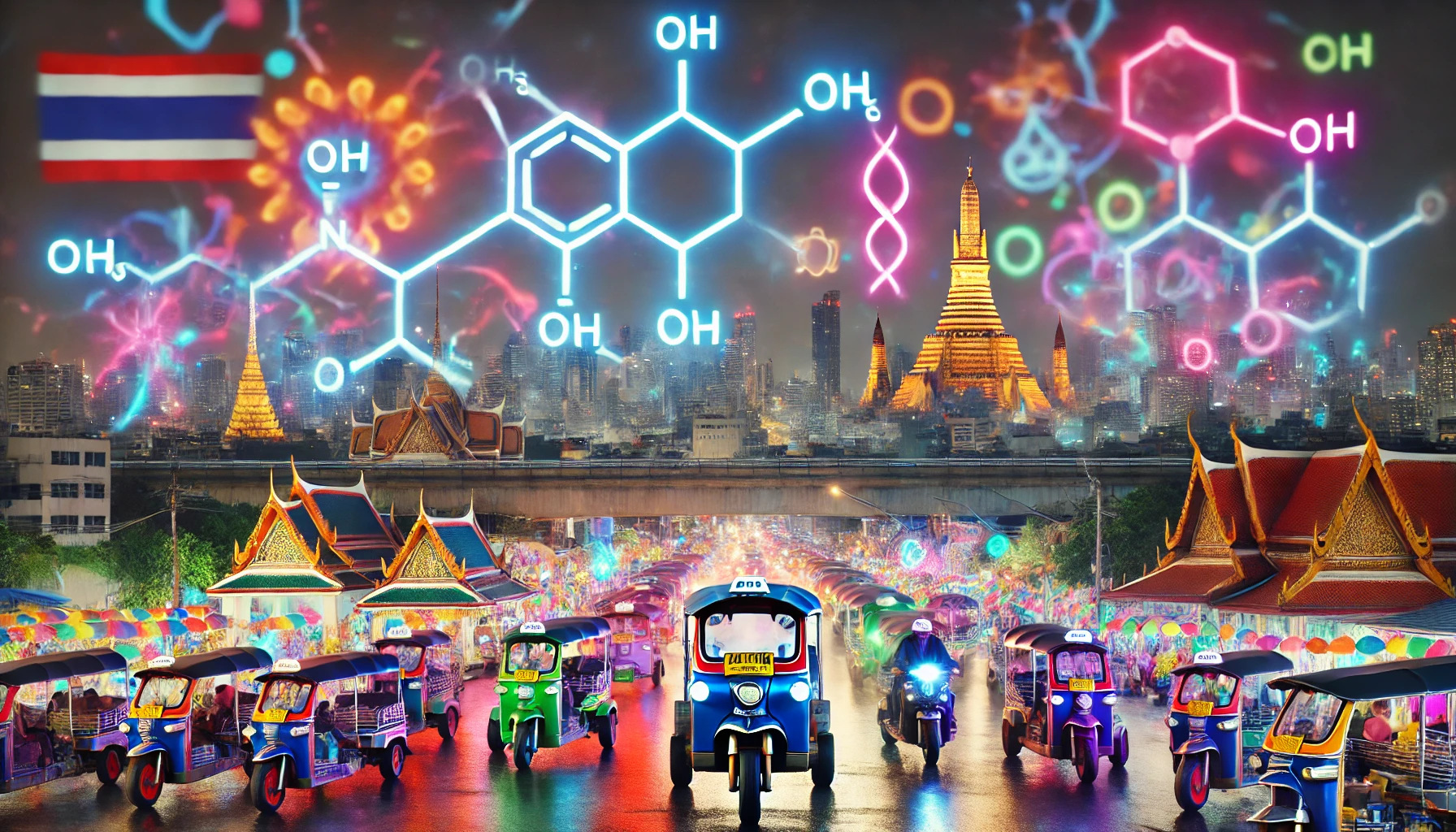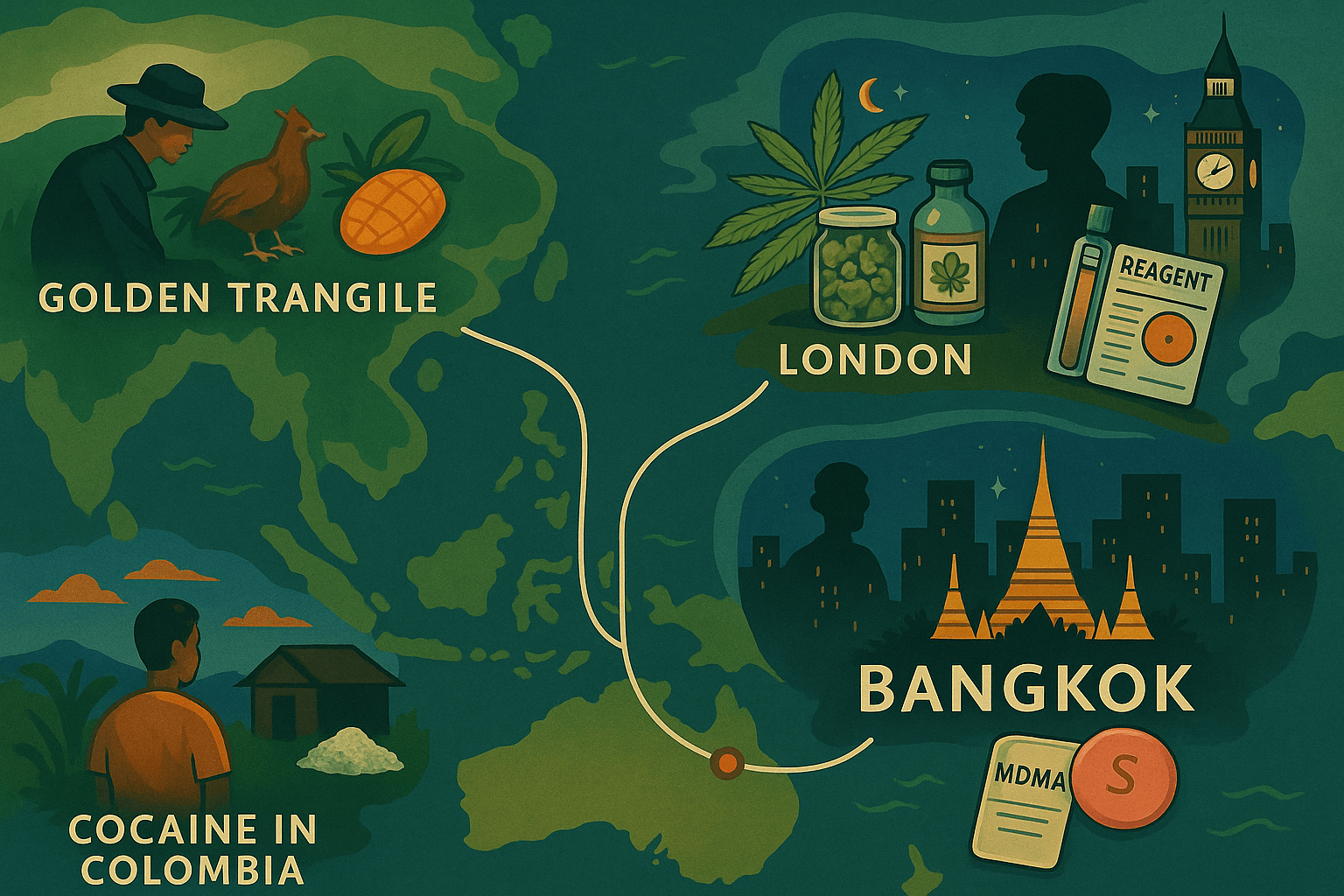Bangkok’s strategic location and extensive infrastructure have long established it as a pivotal hub for trade and tourism in Southeast Asia. However, these same attributes have also made it a central transit point for the global drug trade, particularly concerning drug adulteration. This article examines the geopolitical and infrastructural factors that contribute to Bangkok’s role in this illicit industry and its implications for harm reduction efforts.
1. Geopolitical Location
Bangkok’s proximity to major drug-producing regions makes it a critical node in the global drug trade:
- Golden Triangle Proximity: Situated near the borders of Thailand, Myanmar, and Laos, the Golden Triangle is one of the world’s largest sources of methamphetamine and heroin. In 2023, East and Southeast Asia saw a record seizure of 190 tons of methamphetamine, underscoring the area’s prolific production. (UNODC, 2024)
- Neighboring Conflict Zones: The ongoing civil war in Myanmar has intensified drug production and trafficking. Between October 2023 and mid-2024, Thailand’s northern provinces, including Chiang Mai, Chiang Rai, and Mae Hong Son, seized 346 million methamphetamine pills—a staggering 172% increase from the total seized in 2023. (Reuters, 2024)
Bangkok’s location connects the Golden Triangle to global markets, making it a critical transit and redistribution hub for drug traffickers.
2. Infrastructure and Connectivity
Bangkok’s advanced infrastructure facilitates both legal and illicit trade:
- Air Transport: Suvarnabhumi Airport is among the busiest in the region, handling millions of passengers and vast cargo volumes annually. In the fiscal year 2024, the Thai Customs Department reported 101 drug seizure cases valued at over 615.74 million baht, highlighting the airport’s role in drug smuggling. (Khaosod English, 2024)
- Maritime Routes: The Port of Bangkok and Laem Chabang Port process substantial container traffic. In August 2024, Thai authorities seized 90 kg of heroin at Laem Chabang Port, marking one of the largest drug seizures that year. (AFP, 2024)
- Land Transportation: Extensive road networks connect Bangkok to border regions, facilitating overland drug trafficking. Increased drug seizures in northern provinces highlight the use of these routes for transporting illicit substances into Bangkok. (Reuters, 2024)
The city’s logistical sophistication allows traffickers to conceal their operations amidst legitimate trade flows, making detection more challenging.
3. The Role of Drug Adulteration
Bangkok is not just a transit hub for unaltered drugs but also a key site for adulteration. Adulteration involves mixing drugs with cheaper substances to increase volume and profit margins.
Common adulterants include:
- Heroin and Methamphetamine: Often mixed with caffeine, chalk, or other inert fillers.
- Cocaine: Frequently adulterated with levamisole, baking soda, or fentanyl.
- MDMA: Sometimes replaced entirely by synthetic cathinones (“bath salts”).
Adulteration is tailored to market demands, with traffickers targeting both high-end tourists and local consumers in Bangkok.
4. Corruption and Enforcement Gaps
The global drug trade thrives on weak enforcement, and Bangkok is no exception:
- Corruption: Smugglers exploit corruption within law enforcement and customs to move goods undetected. Bribery ensures safe passage for shipments, reducing the risk of seizure.
- Understaffed Customs: Despite Thailand’s efforts to combat trafficking, the sheer volume of goods moving through Bangkok often overwhelms customs officials, allowing traffickers to evade detection.
These enforcement gaps make Bangkok an attractive hub for traffickers to adulterate and redistribute drugs.
5. Bangkok’s Nightlife and Tourism
Bangkok’s reputation as a global tourist destination and party capital further fuels its role in the drug trade:
- Demand: The city attracts millions of tourists annually, many of whom engage in nightlife scenes where recreational drugs are prevalent. This high demand incentivizes traffickers to bring drugs into Bangkok.
- Festival Scene: Major events like the 808 Festival and Full Moon Parties draw large crowds, creating hotspots for drug use and distribution.
- Adulteration for Profit: With tourists less likely to test substances, traffickers are incentivized to adulterate drugs to maximize profits.
6. Regional and Global Networks
Bangkok is part of a sophisticated global drug trade network that leverages its strategic location. The city acts as a redistribution hub, with drugs adulterated locally and then trafficked to:
- Neighboring Countries: Cambodia, Vietnam, and Malaysia are common destinations for adulterated drugs originating in Bangkok.
- Global Markets: Drugs pass through Bangkok en route to Europe, the United States, and Australia, often disguised as legitimate goods.
7. The Role of Precursors
Bangkok is also a transit hub for precursors—chemicals used to produce synthetic drugs:
- Ephedrine and Pseudoephedrine: These precursors for methamphetamine production are often smuggled through Bangkok.
- Fentanyl Precursors: Chemicals used to manufacture fentanyl and its analogues pass through Bangkok en route to clandestine labs in the region.
These precursors are often sourced from China and India, funneled through Bangkok due to its logistical advantages.
8. Implications for Harm Reduction
Bangkok’s role as a transit hub for drug adulteration underscores the importance of harm reduction strategies:
- Drug Testing Services: Accessible testing kits can help users identify adulterants and avoid dangerous substances.
- Public Awareness Campaigns: Educating tourists and locals about the risks of adulterated drugs is critical.
- Data Sharing: Collecting and sharing data on drug adulteration trends can help authorities and harm reduction organizations target interventions more effectively.
Conclusion
Bangkok’s position as a key transit hub for drug adulteration is a consequence of its geographic location, infrastructure, and thriving tourism industry. While these factors benefit legitimate trade and travel, they also make the city a focal point for the global drug trade.
Understanding Bangkok’s role in this network is essential for developing effective harm reduction strategies. By addressing enforcement gaps, promoting public awareness, and making drug testing widely available, the city can mitigate the risks associated with drug adulteration.
Call to Action:
If you’re in Bangkok, protect yourself by testing your substances before use. Harm reduction starts with informed choices.




